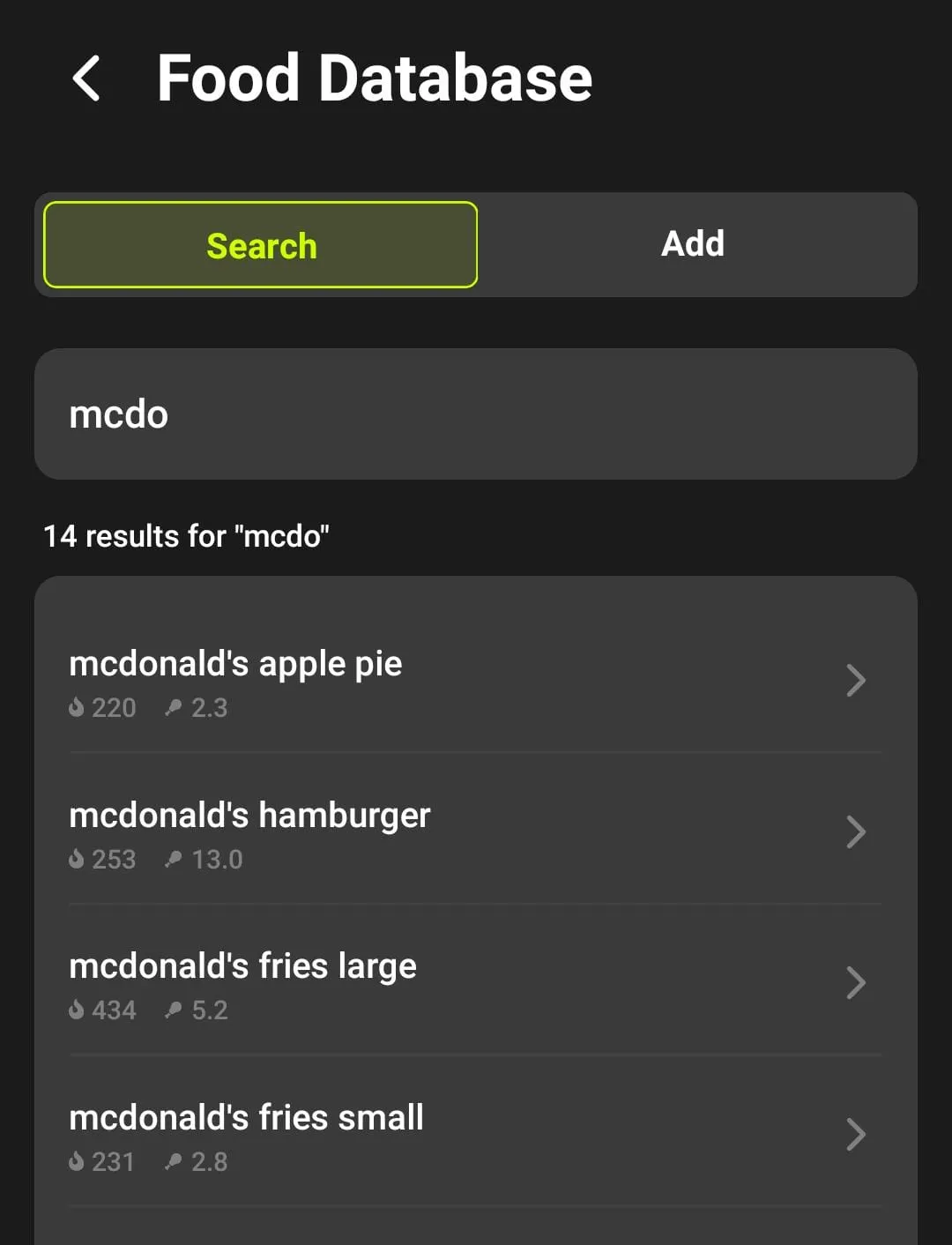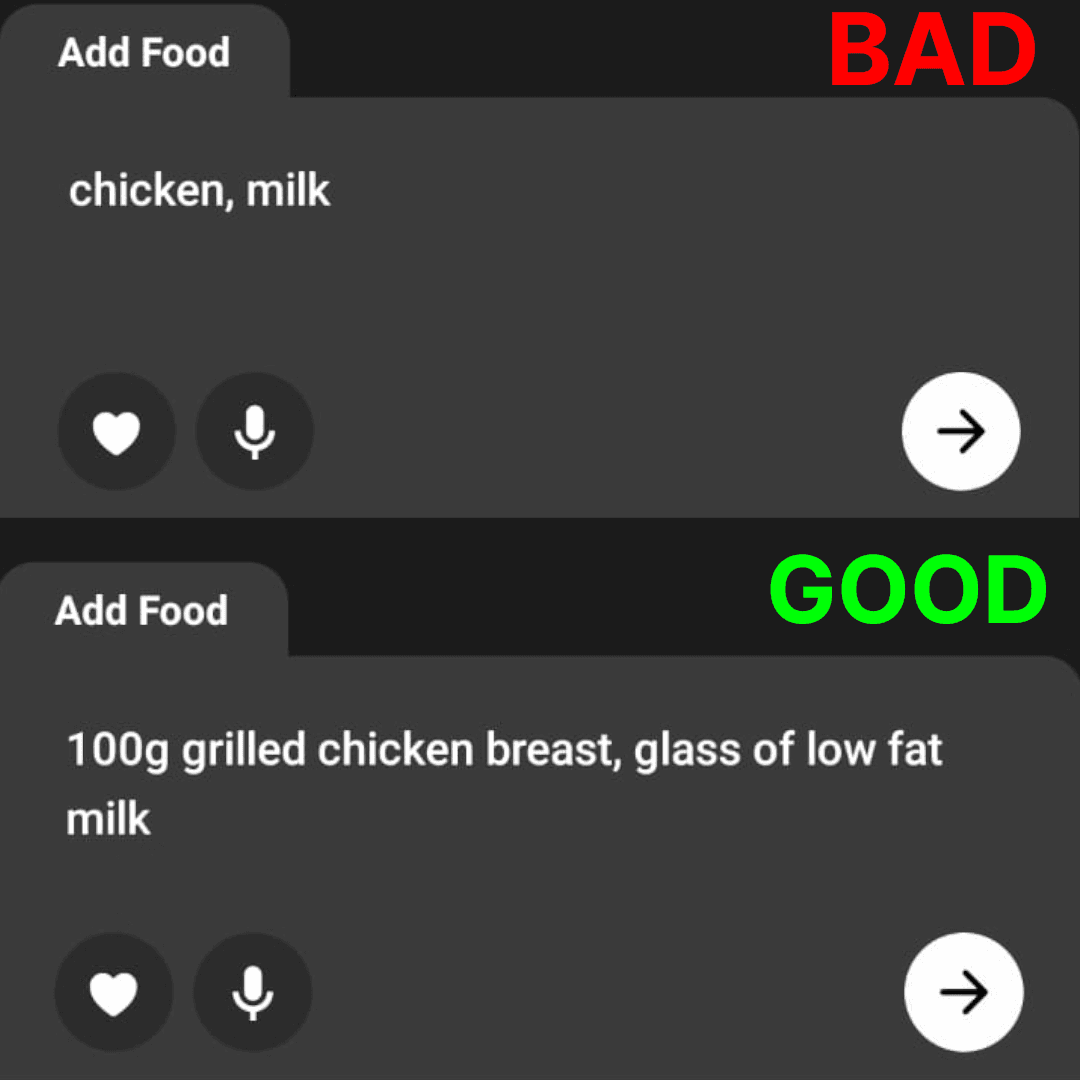Track Like a Pro with Our Input Tips
Master the art of accurate food logging with these expert tips and best practices.
Find Store-Bought Foods Faster
When you type what you ate, our AI figures out the best match for you. But for packaged or store-bought foods, there's an easier way!
Just tap the search icon at the bottom of the screen to open our Food Database and pick the exact product you had.
For the best results, use the database whenever possible. If your food isn't listed or it's a restaurant meal, just describe it — our AI will take care of the rest.

Simple for Everyone, Better with Details
Our tracker is made to be simple for everyone, whether you're just starting out or already familiar with calorie tracking. You can enter foods however you like, but the more details you provide, the more accurate your calorie counts will be.
For example, if you just type "pasta with tomato sauce," the app will recognize it, but it won't know how much pasta you had, how much sauce, or whether the sauce was store-bought or homemade. All of these things can change the calories a lot.

Describing Portions Effectively
A good rule of thumb is to always give some idea of the portion. If you don't know the exact weight, it's perfectly fine to write things like "large portion," "full plate," "2 spoons," or "a handful." Even a small description is better than nothing.
You can also add how the food was prepared—grilled, cooked, baked, or fried—to help the app give more accurate results. Think of it as giving your tracker all the clues it needs to give you the best information.
Tracking Food on the Go
This comes in handy especially for foods you eat on the go, like in restaurants. You probably won't carry a scale, and if calorie information isn't provided, just do your best to estimate.
You can use descriptions like "half a plate" or "two pieces of this." It won't be 100% accurate, and that's okay. What's important is that you measure as much as you can accurately at home, at least in the beginning.
Learn Portions at Home First
It's best to start by measuring portions at home for a while. You'll quickly get a feel for amounts, like what 100 g of rice looks like, which makes estimating on the go much easier.
This practice builds your portion awareness — a skill that makes tracking effortless over time. After a few weeks of measuring at home, you'll be able to estimate portions accurately almost anywhere.
Make Good Use of Favorites
Our database is growing every day, but you'll likely come across foods that aren't included yet. If you eat certain items regularly—like a type of toast, cream cheese, or cereal—take a minute to create a custom food entry and save it to your favorites.
We're also working on a system that will let users contribute to the database, creating a community-built collection of foods.

Don't Forget Oils, Sauces, and Drinks
Finally, don't forget to track things like oils, sauces, and drinks—they add up and can make a big difference in your totals.
A tablespoon of olive oil is about 120 calories. A splash of cream in your coffee might be 50 calories. These "hidden calories" are often the difference between hitting your goals and wondering why progress is slow.

💡 Pro Tip
Set up a few commonly used cooking fats and sauces in your favorites (like "1 tbsp olive oil" or "1 tsp butter") so you can quickly add them to each meal without searching.